Orally disintegrating tablets: the path to improved patient compliance and enhanced life cycle management
Pharmaceutical Technology Europe
Orally disintegrating tablets offer numerous advantages compared with traditional tablets and capsules, and can be an effective solution for developing line extensions of currently marketed therapies.
In the quest to maintain market share and brand equity following patent expiries, many major pharmaceutical companies are focusing on effective product life cycle management as an important growth strategy. Of the various drug delivery technologies available to develop a line extension with improved therapeutic benefit, orally disintegrating tablets (ODTs) provide an attractive alternate to conventional solid oral dosage forms.
ODTs disintegrate rapidly in the mouth (<30 s) without water, and are an attractive dosage form for a wide range of patients, including children, elderly subjects, and patients with behavioural disorders, persistent nausea, Parkinson's disease or cancer who have difficulty swallowing.1,2 The FDA's Center for Drug Evaluation and Research defines ODT as: "A solid dosage form containing medicinal substances which disintegrates rapidly usually within seconds, when placed upon the tongue".3
The global ODT market is flourishing and growing steadily, with more than 100 products sold worldwide and sales exceeding €3 billion.1 Recently conducted surveys indicate that many patients prefer ODTs to other dosage forms; approximately 70% of patients would purchase ODTs, or prefer ODTs, rather than regular tablets or liquids.4

Table 1: Advantages of ODTs - patient benefits and business opportunities.
The key benefits of and indications for ODTs are shown in Tables 1 and 2, respectively.

Table 2: ODT usage and indications.
An ODT is intended to be placed on the tongue and ingested without water. Upon contact with saliva, it disintegrates rapidly. Depending on the disintegration technology used, several mechanisms can play a role in the process. Following ingestion, the drug reaches the gastrointestinal tract (GIT) where it is absorbed based on its physicochemical and biopharmaceutical properties. In some instances, the drug is released in the mouth and a significant fraction is absorbed through the local oromucosal tissues. Resins or sweeteners are also used in the formulation to aid taste-masking of the API. The sequence of events that typically follows administration of an ODT is shown Figure 1.
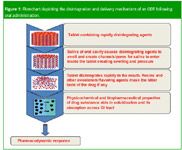
Figure 1: Flowchart depicting the disintegration and delivery mechanism of an ODT following oral administration.
Despite the advantages of ODTs, the technology is often restricted by the amount of drug that can be incorporated into each solid unit dose (lower than 400 mg for insoluble drugs and less than 60 mg for soluble drugs in the case of lyophilized dosage forms).5 As these dosage forms disintegrate rapidly in the mouth, it is desirable to adequately mask the taste of the API to provide a good mouth feel. The contents should also not be released until they reach the GIT. Another important factor to consider is whether they can be manufactured using conventional equipment and processes, as this will have a positive influence on manufacturing costs. Some products, however, may require a more costly, special unitdose packaging if the dosage form is fragile.
Bioequivalency is key
If the ODT is a line extension, it is necessary to demonstrate bioequivalency to the existing dosage form to avoid clinical studies. Proving bioequivalence can be challenging if the method used for taste-masking impacts drug release.
Dr Reddy's has several ODTs in various stages of the approval process. A partial list of products developed, including indications and the technology used, is summarized in Table 3. In some instances, ionexchange resins in conjunction with sweeteners were used for taste-masking. These products use conventional processes and traditional processing equipment, resulting in lower development and manufacturing cost.
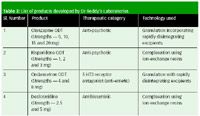
Table 3: List of products developed by Dr Reddy's Laboratories.
The hardness of the products developed by Dr Reddy's is in the 3–8 kp range, indicating their ability to withstand stress during handling. This also results in reduced costs as the products can be packaged in conventional packaging configurations. The products listed in Table 3 are generic versions of innovator products and meet the bioequivalency criteria of the reference products. Some of the reference products were developed using specialized technologies, such as Zydis and Orasol, which require specialized packaging. These technologies may also call for a complicated manufacturing process (sometimes involving lyophilization) and customized packaging that increases costs.
ODT technologies for sparingly soluble drugs
An ODT can also serve as a preferred delivery system for sparingly soluble compounds or compounds where absorption is solubilitylimited (BCS class II). With proper selection of formulation excipients (solubilizers, resins, disintegrants, etc.) and processing technology, any issues relating to wettability, solubility and absorption could be overcome to obtain a product with good organoleptic properties that still meets bioequivalency criteria. In our opinion, the formulation approaches and technology used at Dr Reddy's overcome these challenges and offer unique applications for improved therapeutic benefit. Some of the technologies are detailed below. Figure 2 shows the dissolution profile of a sparingly soluble drug developed in-house as an ODT dosage form.
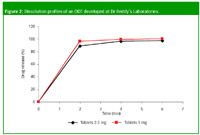
Figure 2: Dissolution profiles of an ODT developed at Dr Reddy's Laboratories.
Granulation with rapidly disintegrating agents
The formulation comprises an API with appropriately selected solubilization excipients and rapidly disintegrating agents that aid drug disintegration in the mouth and dissolution in the GIT, thus overcoming bioequivalence problems. Examples of disintegrating agents include crosscarmelose sodium, crosspovidone and sodium starch glycolate.
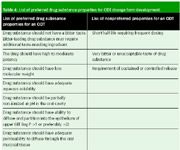
Table 4: List of preferred drug substance properties for ODT doasge form development.
Loosely compressed ODTs usually rely on watersoluble excipients and/or super disintegrants to achieve rapid disintegration. However, to produce a less friable ODT, a stronger binder is required, which in turn requires a more effective disintegrating agent for the tablet to release its contents. Thus, the appropriate selection of formulation excipients and process can give a faster disintegrating tablet.
Following ingestion, these tablets disintegrate into granules and further into powder. Various physicochemical properties of the drug substance, such as solubility, ionization constant and partition coefficient, aid drug dissolution and absorption through the GIT.
Complexation with ion-exchange resins
Ionexchange resins have been used in pharmaceutical formulations for several reasons, including tablet disintegration, taste-masking, stabilization and extended release. One of the most important properties of ionexchange resins is imparted by the functional groups that are attached to a polymer backbone that can exchange ions with drugs in solution. Examples of ionexchange resins include amberlite IRP88 and amberlite IRP64. These resins are practically insoluble in all solvents and at all pH levels, which, combined with their particle size, results in limited absorption by the body. Because of this, these resins are generally recognized as nontoxic and safe.
The drugloaded resin is called a resinate. Resinates are free flowing powders that contain the active in a particular salt form. The exchange of ions is reversible and is dependent on the environment in which the drug and ionexchange resin are found. The insolubility of resinate means it has no effect on taste buds and, hence, provides a tastemasking effect. Tablet disintegration is achieved through the swelling that occurs when the dried resin is put in an aqueous medium, as water penetrates the 3D structure of resin.
Cyclodextrin-based ODT
Cyclodextrins are a class of cyclic oligosaccharides made from starch. They usually have a truncated cone structure and a lipophilic cavity with a hydrophilic exterior. Cyclodextrin can form molecular inclusion complexes with a wide variety of drugs, incorporating the lipophilic moiety of the drug molecule in its cavity. The complex provides an effective means of increasing its solubility. The complex is prepared by solubilizing both the drug substance and cyclodextrin in a suitable medium. The drug complex is converted into solid intermediates for tableting using techniques such as spray drying or layering onto pharmaceutical carriers and/or diluents. The solid intermediate is blended with disintegrants, sweeteners and other tableting excipients, and then compressed into tablets. The synergistic effect of disintegrants and complexation supports faster disintegration, dissolution and bioavailability enhancement. Because of the limitation of using cyclodextrin bulk in the blend, the technology is limited to relatively potent actives where the therapeutic dose is <50 mg.
Nanotechnologybased ODTs
When delivering sparingly soluble drugs, solubility and dissolution can often be enhanced by formulating the drug as nanometersized particles. This approach can be used for developing ODT forms of moderately potent drugs without compromising the organoleptic properties.
The nanoparticles are prepared using techniques such as wet bead milling or highpressure homogenization, and then stabilized using suitable surface modifiers that are either polymers and/or surfactants. The nanoparticle dispersion is converted into solid intermediates using spray granulation, drug layering or spray drying, and then incorporated into solid oral dosage forms with suitable additives to aid rapid disintegration. The ODT formed provides a pharmacokinetic profile that is bioequivalent to its original reference product, but with the improved patient benefits.
Selection of drug substance and excipients
The excipients used in the formulation of ODTs must support the desired organoleptic properties and, simultaneously, allow rapid disintegration when placed on the tongue. For generic products, the excipients should ensure bioequivalence to the reference dosage form. Excipients are selected based on compatibility studies and/or a thorough understanding of the drug structure to minimize or prevent interaction with excipients that can impact physical and chemical stability upon storage. Binders provide cohesiveness during compression to develop an ODT with the required strength to maintain its physical integrity (friability and hardness) during handling and storage. In a fastdissolving formulation, the choice of binder is also critical to achieve the desired sensory and melting characteristics, while also enabling rapid release of the API.
The choice of drug substance that can be formulated as an ODT is dependent on various physicochemical properties as detailed in Table 4. The properties that need to be addressed during development of an ODT are detailed below.
Mechanical strength of final product
When developing an ODT, it is advantageous to have tablets with acceptable hardness at a given compression force to obviate the need for specialized packaging without compromising production speed. Therefore, a more compactable disintegrant can produce stronger and lessfriable tablets.
Drug and dosage form stability
The drug substance should be chemically stable, with the selected excipients and drug product physically stable during processing and handling.
Mouth feel
To achieve patient compliance, it is essential that an ODT is palatable and has a good mouth feel. Small particles are preferable as large particles cause grittiness in the mouth. If the drug substance has a tendency to gel upon contact with water, it could result in patient noncompliance.
Taste
As the tablet disintegrates when placed on the tongue, the ODT should be palatable by incorporating appropriate tastemasking agents and, sometimes, sweeteners.
Rate of disintegration of drug formulation in saliva
The disintegrants must allow rapid penetration of saliva into the tablet to generate the necessary volume expansion and hydrostatic pressures for rapid disintegration when placed in the mouth.
Rate of absorption from the saliva solution and overall bioavailability
The physicochemical properties (i.e., ionization constant, partition coefficient and solubility) determine drug dissolution and absorption from the GIT. However, for sparingly soluble compounds, surface modifiers, solubilizers and resins may aid drug dissolution and absorption.
Summary and future developments
Today, ODTs are more widely available as OTC products for treating various common symptoms. Many ODTs have been successfully commercialized and the market for this particular dosage form is likely to expand because of patient demand and increasing market acceptance.
As new technologies are becoming available that do not add to the manufacturing costs, the future prospect for ODTs as an alternative to traditional tablets and capsules is promising, especially as the technology could be modified to deliver large molecular weight biopharmaceutical therapeutics, such as proteins and peptides that are unstable at gastric pH. Nowadays, these classes of molecules are developed as injectable drugs because of the limited solubility and propensity to degrade at gastric pH conditions when administered as an immediate release dosage form. With recent advances in processing technologies, pharmaceutical companies can take advantage of ODTs for innovative products, as well as product line extensions to maintain market share following patent expirations.
Raviraj Pillai is Vice President, Integrated Product development, Dr. Reddys Laboratories Ltd (India). ravip@drreddys.com
Ranadeep Bokalial Custom Pharmaceutical Services Dr. Reddys Laboratories Ltd (India).
Pradeep Karatgi Custom Pharmaceutical Services Dr. Reddys Laboratories Ltd (India).
Sanjay Wagh Custom Pharmaceutical ServicesDr. Reddys Laboratories Ltd (India).
Rahul S Gawande Integrated Product Development Dr. Reddy's Laboratories Ltd (India).
References
1. T.M. Harmon, Orally disintegrating tablets: A valuable life cycle management strategy., Pharmaceutical Commerce., March 2007. www.PharmaceuticalCommerce.com/frontEnd/487
2. J. Klancke, Dissolution Technologies, 10(2), 6–8 (2003).
3. FDA Guidance for industry — Orally disintegrating tablets, December 2008. www.fda.gov.
4. P.V. Arnum, Pharm. Technol., 31(10) 66–76 (2007).
5. W.R. Pfister and T.K. Ghosh, Pharm. Technol.,29(10), 138–150 (2005).
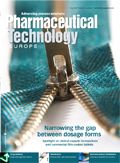
Drug Solutions Podcast: A Closer Look at mRNA in Oncology and Vaccines
April 30th 2024In this episode fo the Drug Solutions Podcast, etherna’s vice-president of Technology and Innovation, Stefaan De Koker, discusses the merits and challenges of using mRNA as the foundation for therapeutics in oncology as well as for vaccines.
Drug Solutions Podcast: Applying Appropriate Analytics to Drug Development
March 26th 2024In this episode of the Drug Solutions Podcast, Jan Bekker, Vice President of Business Development, Commercial and Technical Operations at BioCina, discusses the latest analytical tools and their applications in the drug development market.